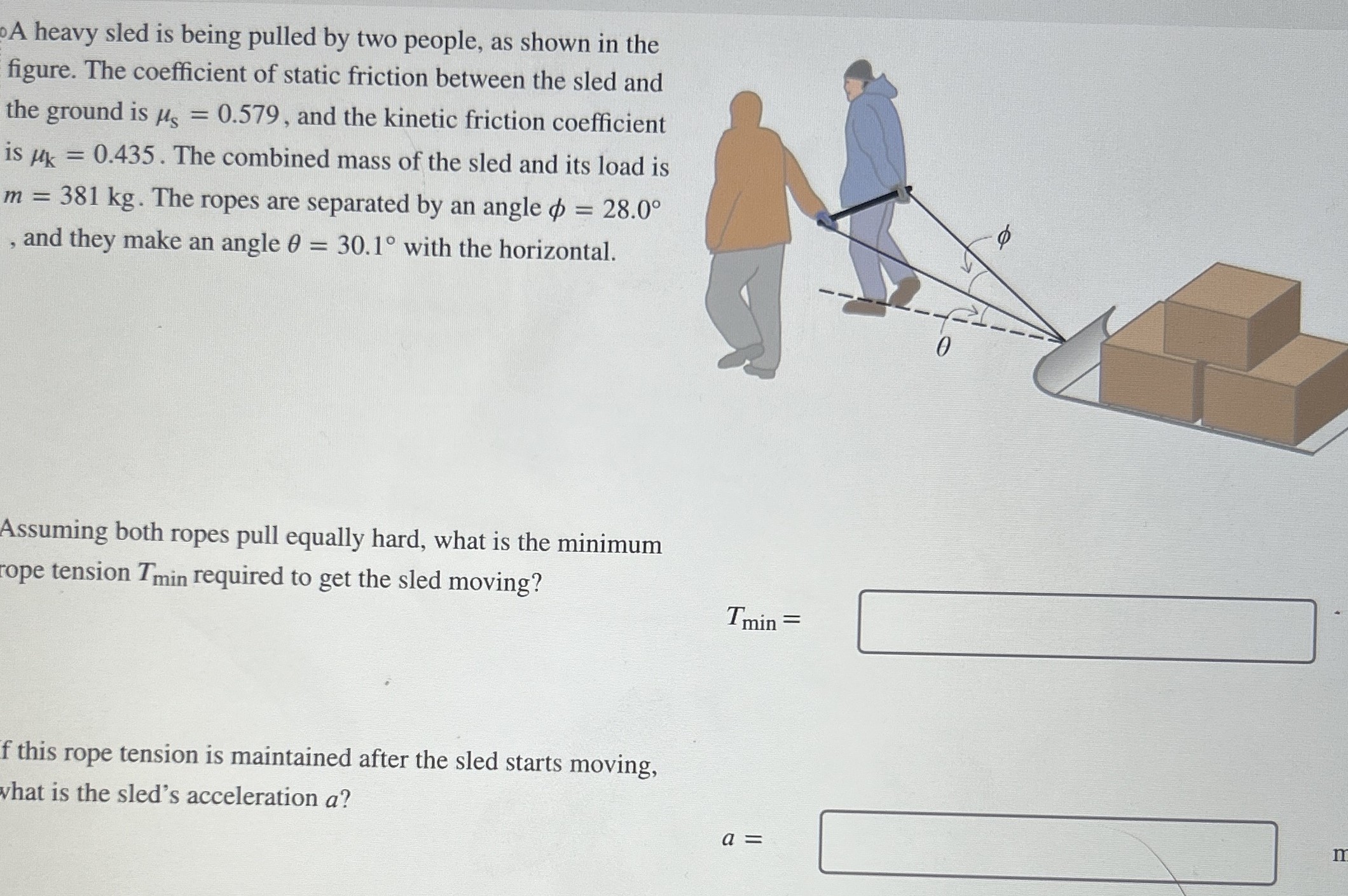A heavy sled is being pulled by two people, as shown in the figure. The coefficient of static friction between the sled and the ground is μs = 0.579, and the kinetic friction coefficient is μk = 0.435. The combined mass of the sled and its load is m = 381 kg. The ropes are separated by an angle ϕ = 28.0∘, and they make an angle θ = 30.1∘ with the horizontal. Assuming both ropes pull equally hard, what is the minimum rope tension Tmin required to get the sled moving? Tmin = f this rope tension is maintained after the sled starts moving, what is the sled's acceleration a? a =
